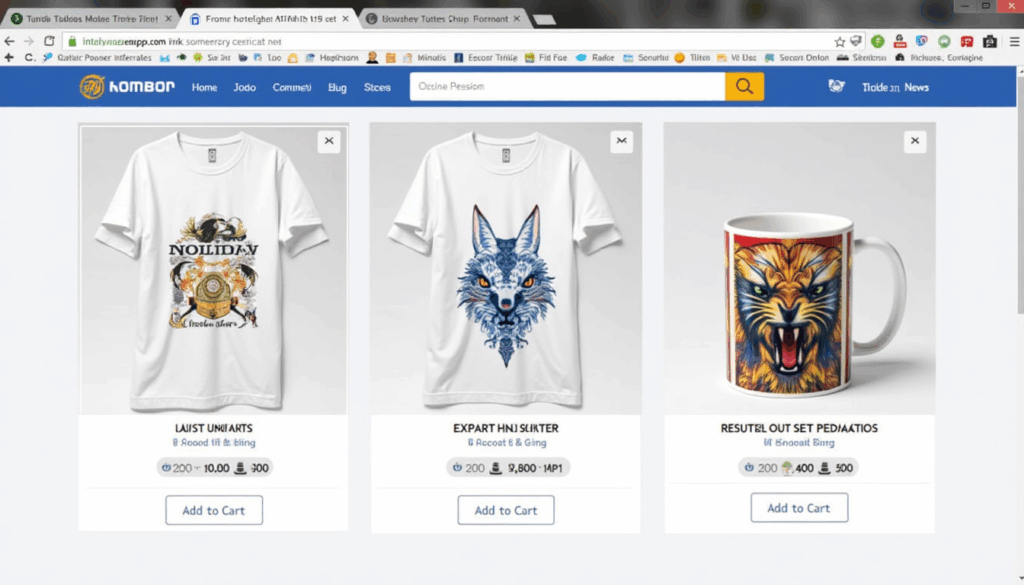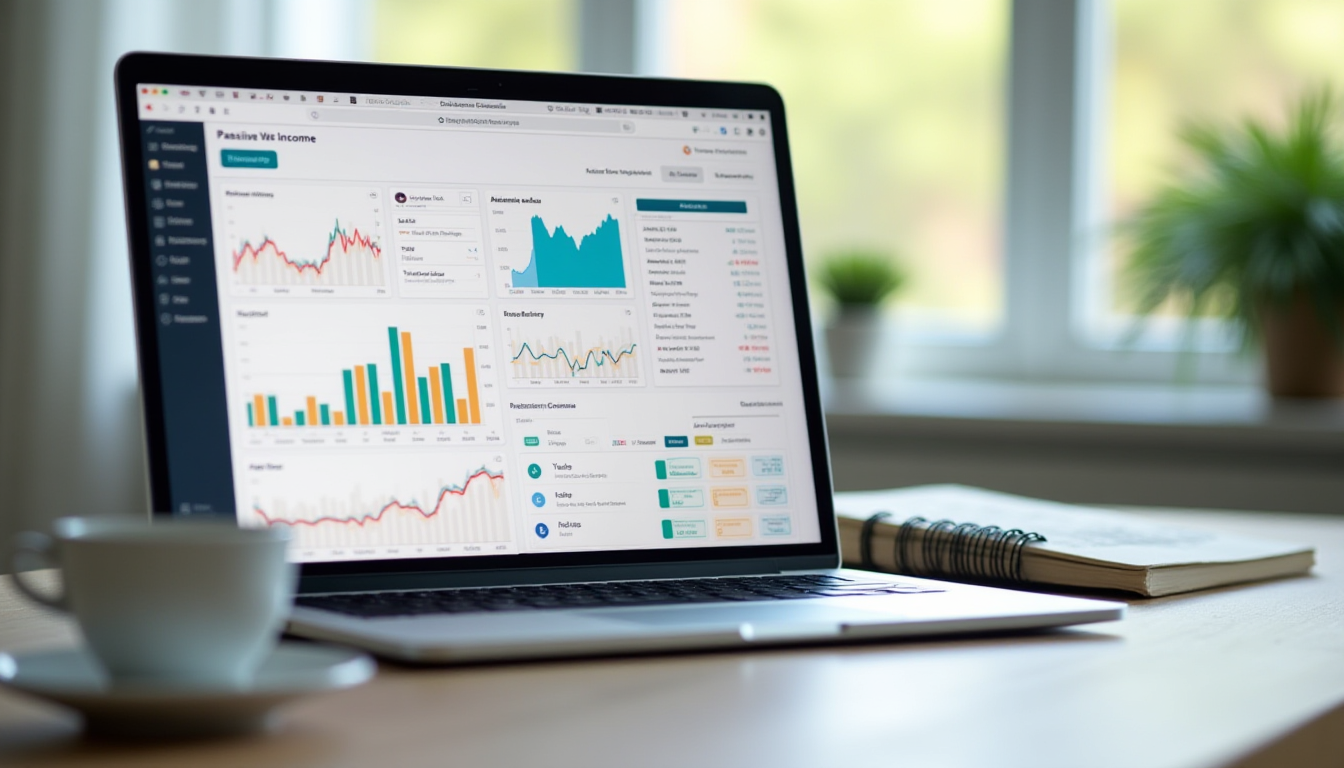In a world where financial independence is more desirable than ever, passive income has evolved from a buzzword into a practical and essential strategy for long-term wealth building. Whether you’re looking to supplement your current salary, escape the 9-to-5 grind, or build generational wealth, generating income that doesn’t require constant time investment is the ultimate goal.
The year 2025 brings new opportunities, advanced technology, and innovative platforms that make earning money while you sleep not just possible—but achievable for anyone with motivation and a clear plan. In this comprehensive guide, we’ll explore the top 10 passive income ideas for 2025, each backed by real-world platforms, proven strategies, and scalable potential.
These aren’t get-rich-quick schemes. Instead, they are realistic, sustainable, and accessible methods that thousands are already using to create financial freedom. Let’s dive into the future of passive income.
Table of Contents
1. Dividend Stocks: Build Wealth Through Consistent Payouts
Dividend stocks remain one of the most reliable and time-tested passive income strategies in 2025. These are shares in established companies—often in stable sectors like utilities, healthcare, and consumer staples—that distribute a portion of their profits directly to shareholders on a regular basis, usually quarterly.
What makes dividend investing so powerful is compounding. When you reinvest your dividends, they buy additional shares, which in turn generate more dividends. Over time, this snowball effect can dramatically increase both your portfolio value and your income stream.
Real Estate Investment Trusts (REITs) are especially attractive in this space. By law, REITs must distribute at least 90% of their taxable income to shareholders, making them high-yield assets ideal for passive investors. Sectors like residential, commercial, and industrial real estate continue to show strong performance, even amid economic fluctuations.
Thanks to user-friendly investment platforms like M1 Finance, Robinhood, and Fidelity, building a diversified dividend portfolio has never been easier. You can automate investments, set up recurring contributions, and choose from Exchange-Traded Funds (ETFs) focused on dividend growth, such as SCHD or VIG.
For those seeking lower volatility and broader exposure, dividend-focused ETFs offer instant diversification across dozens or even hundreds of companies. This reduces risk while maintaining steady returns—often between 3% and 6% annually, with room for capital appreciation.
Pro Tip: Focus on companies with a history of increasing dividends (Dividend Aristocrats) to ensure your income grows over time, keeping pace with inflation.

2. Real Estate Rentals: Modernize Your Property Income
Owning rental property has long been a cornerstone of passive income, but in 2025, the game has changed. Technology, automation, and new ownership models have made real estate more accessible and less labor-intensive than ever before.
Traditional long-term rentals in growing markets—especially those with strong job growth and low housing inventory—offer consistent cash flow and valuable tax benefits. Deductions for mortgage interest, property depreciation, repairs, and management fees can significantly reduce taxable income, boosting net returns.
But the real innovation lies in short-term rentals via platforms like Airbnb and Vrbo. In tourist hotspots, beach towns, or urban centers, nightly rates often far exceed what you’d earn from a monthly lease. With smart home technology—like keyless entry, automated check-ins, and remote monitoring—you can manage properties with minimal hands-on involvement.
Even better: property management services now handle everything from guest communication to cleaning and maintenance, allowing investors to collect checks without lifting a finger.
For those without $100k+ to buy a home outright, fractional real estate investing is a game-changer. Platforms like Fundrise, Arrived Homes, and RealtyMogul let you invest as little as $100 in income-generating properties. You earn proportional rental income and potential appreciation, all without dealing with tenants or repairs.
This democratization of real estate means that anyone—not just the wealthy—can build a diversified real estate portfolio and earn truly passive income.

3. Peer-to-Peer Lending: Be the Bank, Earn the Interest
Peer-to-peer (P2P) lending has matured into a legitimate and profitable passive income stream by 2025. Platforms like LendingClub, Prosper, and emerging DeFi (decentralized finance) marketplaces connect individual investors directly with borrowers, cutting out traditional banks.
Here’s how it works: You lend money to pre-vetted individuals or small businesses, and in return, you earn interest as the loan is repaid over time. Average annual returns typically range from 5% to 10%, outperforming savings accounts and government bonds.
The key to minimizing risk? Diversification. Instead of putting $1,000 into a single loan, spread $25 across 40 different loans. This way, even if a few borrowers default, your overall returns remain stable.
Many platforms now offer automated investing tools that select loans based on your risk tolerance—conservative, moderate, or aggressive—making the process completely hands-off. Some even feature secondary markets, where you can sell your loan portions early if you need liquidity.
While defaults do happen, advanced algorithms and credit scoring models help predict borrower reliability. Historical data shows that well-diversified portfolios on top platforms maintain positive net returns over time.
Note: P2P lending isn’t FDIC-insured, so only invest money you can afford to lose. Treat it as a higher-risk, higher-reward component of your overall portfolio.
4. Print-on-Demand Stores: Sell Custom Products Without Inventory
Print-on-demand (POD) is a zero-risk e-commerce model that allows entrepreneurs to sell custom-designed merchandise—like t-shirts, mugs, phone cases, and posters—without holding inventory, managing shipping, or handling customer service.
When a customer places an order, a third-party supplier (like Printful, Printify, or Redbubble) prints the product and ships it directly to them. Your role? Create the design, upload it, set your price, and promote your store.
Platforms like Shopify, Etsy, and Amazon Merch integrate seamlessly with POD services, making setup fast and intuitive. Once your store is live, sales can come in 24/7, even while you sleep.
In 2025, AI-powered design tools like MidJourney, Canva, and DALL·E have made it easier than ever to create eye-catching graphics—even if you’re not an artist. Need a motivational quote on a hoodie? Generate it in seconds. Want a niche pet-themed design? AI can help.
Marketing remains crucial. Successful POD sellers use social media ads, influencer collaborations, and SEO-optimized product listings to drive traffic. But once systems are in place, the business runs largely on autopilot.
Bonus: Some platforms allow you to sell digital designs separately or bundle them into themed packs, increasing average order value and profitability.

5. YouTube Automation: Monetize Content Without Being On Camera
YouTube automation has exploded in popularity by 2025, offering a unique path to passive income through outsourced content creation. The idea? You own and monetize a YouTube channel, but you don’t appear on camera or handle editing.
Instead, you hire freelancers or agencies to manage every step: researching topics, writing scripts, generating AI voiceovers, creating visuals, and editing videos. Your job is to define the niche, approve content, and optimize for growth.
Channels in niches like personal finance, tech reviews, fun facts, motivational content, and AI news perform exceptionally well. Once a video gains traction, it can generate views—and ad revenue—for years.
With YouTube’s Partner Program, you earn from multiple streams:
- AdSense revenue (from pre-roll and mid-roll ads)
- Super Chats and Super Thanks (viewer donations)
- Channel Memberships (monthly subscriptions)
- Affiliate marketing (product links in descriptions)
- Merchandise shelves
AI tools like Pictory, Synthesia, and ElevenLabs have drastically reduced production costs and time. You can now create professional-quality videos at scale, making YouTube automation one of the most scalable passive income models available.
Pro Tip: Focus on evergreen content that stays relevant over time. Avoid trending topics that fade quickly.

6. Affiliate Marketing: Earn Commissions by Promoting Products
Affiliate marketing remains one of the most accessible and flexible passive income strategies in 2025. It involves promoting other companies’ products or services and earning a commission for every sale or lead generated through your unique referral link.
The beauty of affiliate marketing is its versatility. You can promote products through:
- Blogs and websites
- YouTube videos
- Email newsletters
- Social media posts (TikTok, Instagram, Pinterest)
- Podcasts
High-paying affiliate programs include:
- Amazon Associates (up to 10% commission)
- Bluehost ($65–$130 per sale)
- Coursera (revenue share on course enrollments)
- ClickBank (digital products with commissions up to 75%)
Success comes from building trust and targeting the right audience. For example, a personal finance blog can naturally recommend budgeting tools, credit cards, or investment platforms. A fitness channel can promote protein powders, workout apps, or smart scales.
Once you’ve built content around these products, it continues to earn commissions long after publication. SEO-optimized articles can rank on Google for years, bringing in traffic and sales with no extra effort.
Key Strategy: Use comparison reviews, “best of” lists, and tutorials to naturally integrate affiliate links.
7. Online Course Creation: Package Your Knowledge Once, Sell Forever
The demand for lifelong learning is stronger than ever in 2025. Online course creation allows experts to monetize their skills by packaging knowledge into video-based lessons that can be sold repeatedly—without additional work.
Platforms like Udemy, Teachable, Skillshare, and Kajabi make it easy to host, sell, and deliver courses. Whether you’re teaching coding, photography, copywriting, yoga, or gardening, there’s a global audience willing to pay.
Yes, creating a course requires an upfront investment of time and energy—planning curriculum, filming videos, editing, and setting up sales pages. But once launched, a high-quality course can generate passive income for years.
Top creators earn thousands per month from a single course. Some even build entire course ecosystems, offering beginner to advanced levels, certifications, and community access.
AI tools are now accelerating the process:
- ChatGPT helps write scripts and lesson outlines
- Descript simplifies video editing
- Canva creates engaging slides and workbooks
Pro Tip: Offer a free mini-course or lead magnet to build your email list and convert subscribers into paying customers.
8. Mobile App Development: Build Once, Earn Recurring Revenue
Mobile apps continue to offer impressive passive income potential in 2025—even for non-developers. Thanks to no-code and low-code platforms like Adalo, Glide, and Bubble, anyone can build and launch functional apps without writing a single line of code.
Popular app ideas include:
- Budgeting and finance trackers
- Meditation and mindfulness guides
- Language learning flashcards
- Habit-building tools
- Niche calculators or planners
Monetization options are diverse:
- In-app ads (via Google AdMob)
- In-app purchases (unlock premium features)
- Subscriptions (monthly access to content)
- One-time purchases (lifetime access)
Once published on the Apple App Store or Google Play, your app can generate downloads and revenue around the clock. Maintenance is minimal, especially for simple, static apps.
Successful apps often solve a specific problem or cater to a passionate niche. For example, a plant care reminder app might attract gardening enthusiasts who are willing to pay for premium features.
Note: App store approval and user acquisition require some effort, but organic growth through reviews and word-of-mouth can sustain long-term income.
9. Digital Products: High-Profit, Zero Overhead
Selling digital products is one of the most profitable and low-maintenance passive income models in 2025. Since there’s no physical inventory, shipping, or production cost, profit margins can exceed 90%.
Popular digital products include:
- E-books and guides
- Printable planners and worksheets
- Stock photos and video clips
- Music tracks and sound effects
- Code templates and plugins
- Canva templates and social media kits
Platforms like Gumroad, Etsy, Payhip, and Shopify make it easy to set up a storefront and process payments. You can even automate delivery via email.
AI tools have revolutionized creation:
- ChatGPT writes full e-books in hours
- MidJourney generates artistic designs
- Canva turns ideas into professional templates
- Audacity + AI voice tools produce audio content
Smart sellers bundle related products into theme packs (e.g., “Social Media Bundle for Coaches”) to increase perceived value and average order size.
Bonus: Digital products can be sold across multiple platforms simultaneously, maximizing reach and revenue.
10. Licensing Creative Work: Earn Royalties for Years
Licensing your intellectual property is an underrated but powerful way to generate long-term passive income. Instead of selling a product outright, you grant others the right to use your work in exchange for royalties.
In 2025, creators can license:
- Photography and videos (via Shutterstock, Getty Images)
- Music and soundtracks (via Epidemic Sound, AudioJungle)
- Artwork and designs (via Adobe Stock, Inprnt)
- Writing and scripts (for blogs, ads, or video content)
- Code and software components
Once your asset is approved and uploaded, it can be purchased repeatedly by businesses, filmmakers, marketers, and content creators. Each sale earns you a commission—sometimes for years.
For example, a single stock photo could be licensed hundreds of times. A background music track might be used in dozens of YouTube videos, each generating royalty payments.
The key is creating high-quality, evergreen content with broad commercial appeal. Think timeless images, versatile music genres, or universally useful templates.
Pro Tip: Submit your work to multiple platforms to maximize exposure and earnings.
FAQ Section
What is the easiest passive income idea to start in 2025?
Affiliate marketing is one of the easiest to start, especially if you already have a blog, social media following, or YouTube channel. You can begin promoting products with minimal upfront cost.
How much money do I need to start earning passive income?
It depends on the method. You can start affiliate marketing or digital product sales with little to no money. Real estate and stock investing may require $500–$1,000+ to see meaningful returns.
Are passive income streams really “passive”?
Most require an initial time or financial investment. After setup, they become mostly passive, but occasional maintenance (like updating content or managing ads) may be needed.
Can I build passive income while working full-time?
Absolutely. Many people start passive income streams as side hustles. Focus on scalable, low-time models like digital products, affiliate marketing, or automated YouTube channels.
Which passive income method has the highest earning potential?
Online courses, app development, and YouTube automation have the highest scalability. A single successful course or app can generate six or seven figures over time.
Is passive income taxable?
Yes. All passive income is subject to taxation. Keep accurate records and consult a tax professional to understand deductions and reporting requirements.
How long does it take to see results?How long does it take to see results?
It varies. Dividend stocks pay quarterly. Print-on-demand may take weeks to gain traction. YouTube and blogs can take 6–12 months to grow. Patience and consistency are key.
Conclusion
The landscape of passive income in 2025 is more accessible, diverse, and technology-driven than ever before. From dividend stocks and real estate to AI-powered YouTube channels and digital product stores, there are real, proven ways to earn money while you sleep.
The key is to start—no matter how small. Choose one idea that aligns with your skills, interests, and resources. Invest time upfront to build a solid foundation, then automate and scale over time.
Remember, passive income isn’t about instant riches. It’s about consistent effort today leading to financial freedom tomorrow. Whether you’re aiming to replace your salary or simply gain peace of mind, these 10 strategies offer a clear path forward.
Start now. Build smart. And let your money work for you.



